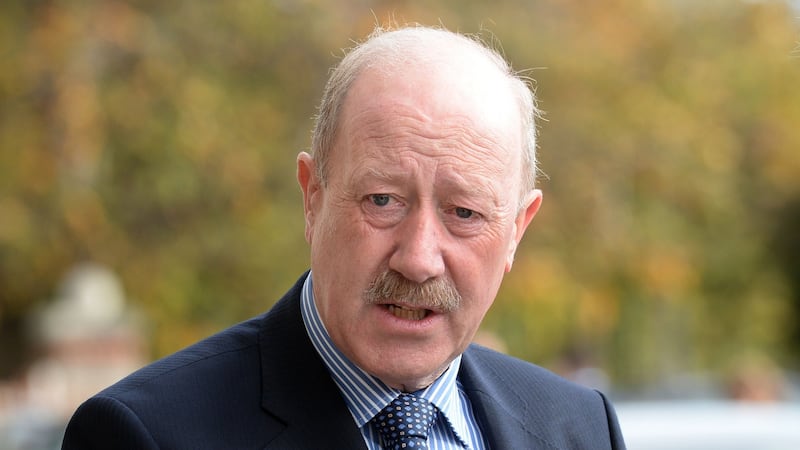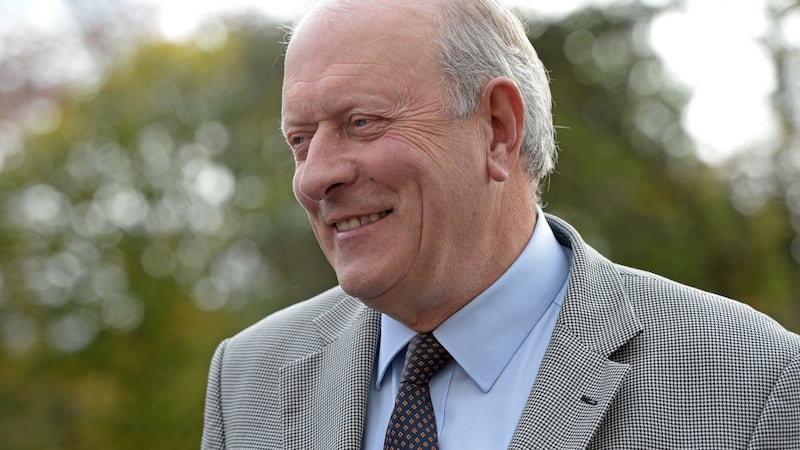Former Garda deputy commissioner Joe Ainsworth, known to many as Two Gun Joe, though, as his son quipped at his funeral Mass, the number might well have been higher, died last Thursday aged 88, sitting in his favourite chair watching TV.
His favourite dog, Layla, was at his feet and stayed with him. His last work of literature, a poem entitled Startling News, was completed the day before his passing.
Family, friends, and former and serving colleagues of the Garda Síochána gathered on Tuesday in Dublin to bid farewell to a man of diverse and unusual interests, whose professional life was both colourful and controversial.


“He was a man known by many names to so many different people,” said his son Henry, himself a Garda detective, as he welcomed some 200 mourners to the Church of St Paul of the Cross at Mount Argus.
“He was Joe, he was TJ. He was nicknamed Hawkeye. He was called Two Gun Joe and at times, it would have been three, four or five gun. He was known as the Boss, Mr Ainsworth, grandad and dad.”
The mourners were led by Henry; his brother Adrian, a retired and decorated commandant of the Defence Forces; their sister Regina; and Mr Ainsworth’s 10 grandchildren and three great grandchildren. Mr Ainsworth was predeceased by Mary, his wife of 53 years.
Former and serving senior gardaí were there in numbers, including retired commissioners Martin Callinan, Pat Byrne, Fachtna Murphy and Patrick Culligan; retired assistant commissioner Pat O’Toole, Assistant Commissioner John O’Mahony, retired head of the Special Branch Chief Supt Pat Doocey, and Brendan Quinn, former president of the Association of Garda Superintendents.
Retirement
No mention was made of the circumstances of Mr Ainsworth’s forced retirement in 1983 because of his and the then commissioner, the late Patrick McLaughlin’s, involvement in illegal telephone tapping and bugging. No senior politicians, current or retired, were in evidence at the funeral.
However, a Garda Síochána colour party, bearing the Tricolour and the flag of the Garda, participated in the funeral, a mark of respect both for the late deputy commissioner and for his family.
His deputy commissioner’s hat and gloves were placed on his coffin.
Items representing aspects of his life were also offered up – a book of poetry, a gadget and new car brochure and a clock, one from a collection of 275.
In his eulogy Henry Ainsworth said his father had served in the Garda "with loyalty and honour".
“For 35 years he ate, drank and breathed An Garda Síochána, and in 35 years of retirement this continued. Once a guard, always a guard.”
He was instrumental in the revival of the Garda Band; as barrack master in Garda Headquarters he was a moderniser; put in charge of intelligence and security he flung himself into the job.
“He read anything he could read about MI5, MI6, GSG 9 [the German counter-intelligence organisation], Mossad, CIA, the KGB etc, just to name a few,” said Henry.
He would bring weapons home after work to examine their suitability in detail. “He personally tried and tested new equipment for the force, including guns such as Smith and Wesson and [the] Walther PPK.”
He said his father’s robust approach to terrorism as head of ISB paid dividends as he introduced the Special Task Force, Border patrolling and other measures against the IRA.
“In nearly four years while he was at the helm of ISB, An Garda Síochána seized four tonnes of explosives and they arrested a substantial number of IRA activists. This was far more than had been done in the preceding 20 years, so much so that security features had to be put in the family home.”
And then a revealing detail about Garda/RUC relations.
Peace process
“The peace process did not begin in the 1990s,” said Henry. “In my opinion it began back in the late 1970s when the RUC chief constable, Sir Jack Hermon, would come to our home for meetings, dinner and to discuss strategies and the combating of terrorism on this island and swopping intelligence.”
In retirement Mr Ainsworth earned a BCL as a mature student in UCD and wrote “27 books comprising of 1,323 pieces of prose, poems and reflections from life”.
The Garda colour party of five, two standard bearers and two buglers led by Insp Pat Kenny, approached the coffin. The Royal Salute was sounded twice, flags lowered in respect.
A black cat sauntered up the aisle, seemingly oblivious and evidently unperturbed by the funeral rites. A sign of good luck, remarked Regina, closing the ceremony by telling the congregation her father had been “a complete character who left old and young entertained”.
And she read from Startling News, lines dwelling on the transient importance of what engages the media. "What arrived today is slowly dying into history," wrote the former deputy commissioner the day before his death. He continued, perhaps ruminating on his own experience of the media crucible: "A good friend who had my interest at heart said to me that I should distinguish between hurtful experience and the malice and the spite of the supplier of the hurt involved, and that I should push today's papers to one side for a day. He said your ease of mind will benefit.
“ It will. . .”
Mr Ainsworth was buried in Mount Venus Cemetery.







